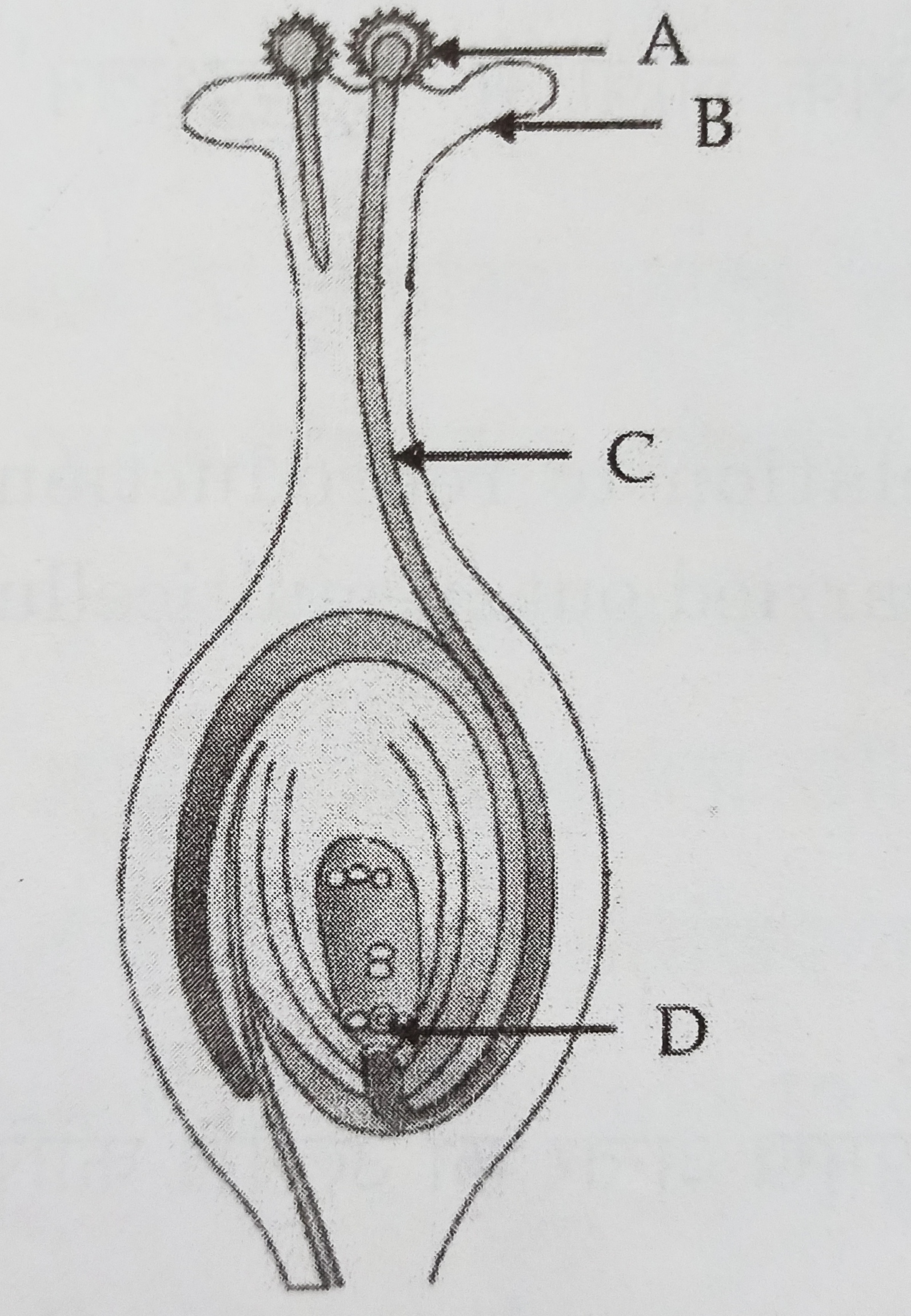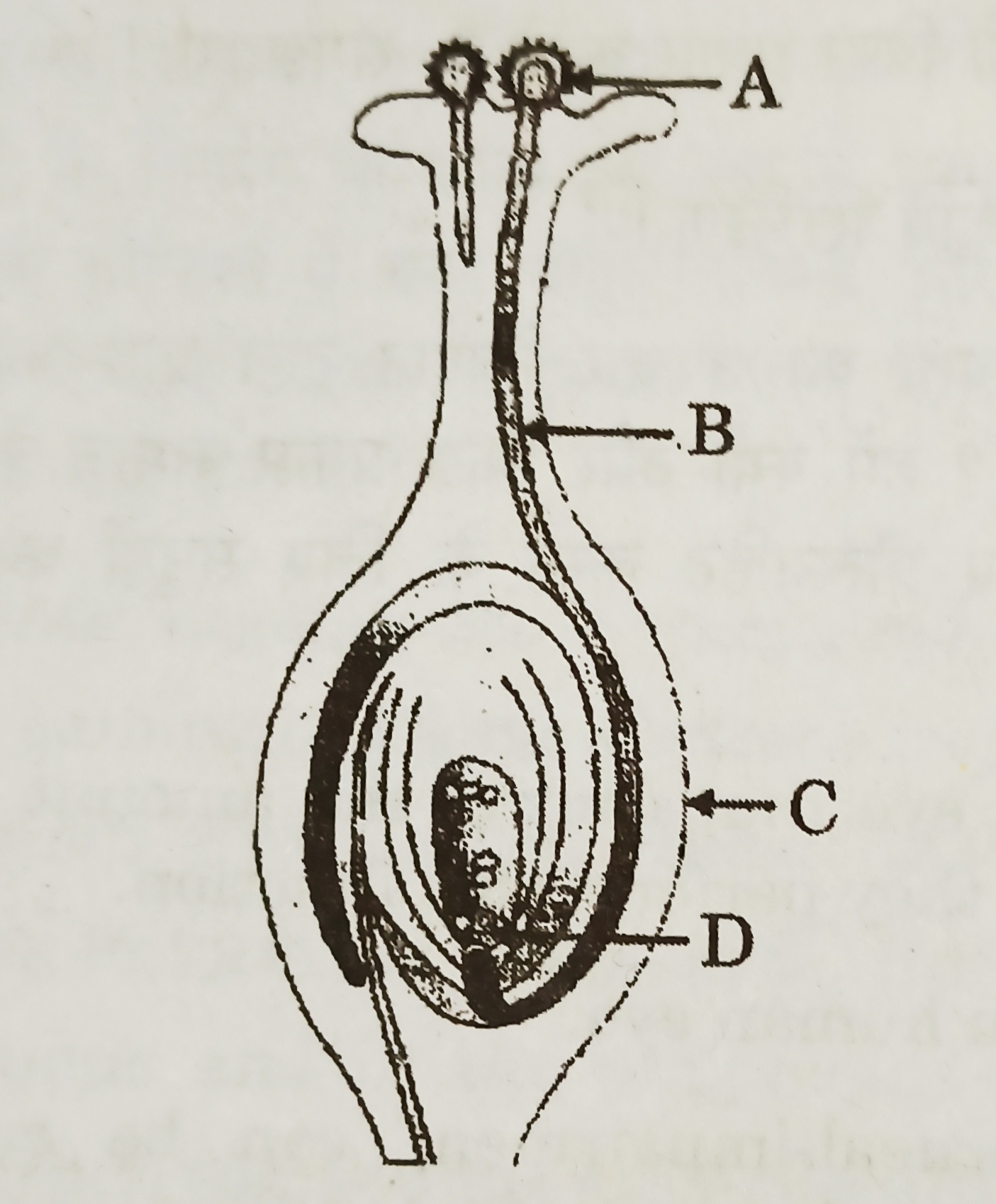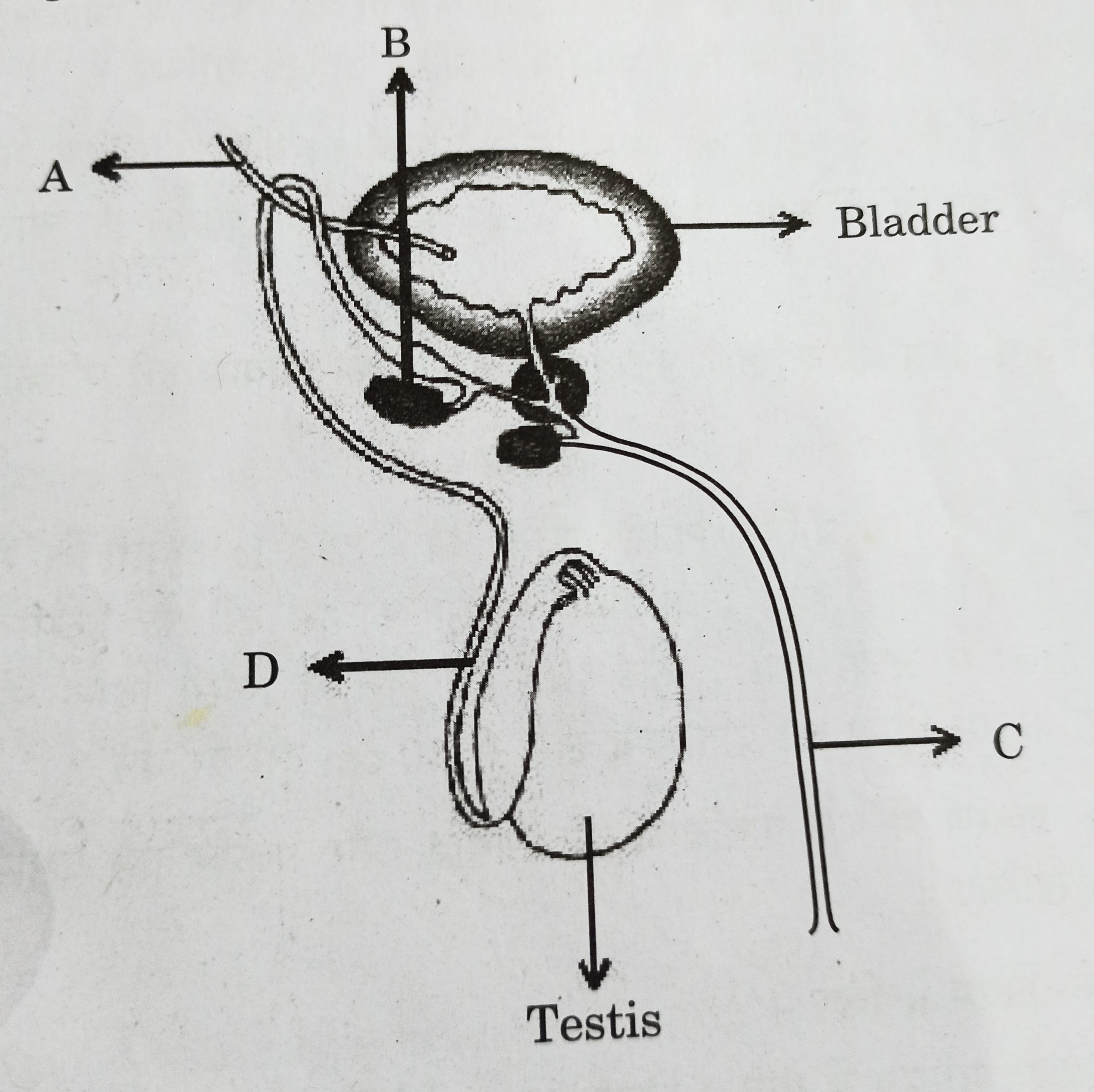Class 10 – How do Organisms Reproduce – Previous Years Questions
Previous Years Questions Notes Important QuestionsHow do Organisms Reproduce – Previous Years Questions
- The thread like structure that develop on a moist slice of bread in Rhizopus are :
a. Sporangia
b. Filaments
c. Rhizoids
d. Hyphe [CBSE 2023] [1 Mark] - Choose the correct order of the stages of binary fission in Leishmania.

a. I, II, III, IV, V
b. I, III, II, V, IV
c. I, III, V, II, IV
d. I, II, III, V, IV [CBSE 2023] [1 Mark] - Consider the following three flowers namely X, Y and Z. Which flowers would develop into a fruit ?

a. X only
b. Z only
c. X and Y only
d. Y and Z only [CBSE 2023] [1 Mark] - Assertion (A) : Testes in human males are located outside the abdominal cavity in scrontum.
Reason (R) : scrontum provides a lower temperature than the normal body temperature for sperm formation.
Answer the question selecting appropriate options given below :
a. Both Assertion (A) and Reason (R) are true and Reason (R) is the correct explanation of (A).
b. Both Assertion (A) and Reason (R) are true but Reason (R) is not the correct explanation of (A).
c. Assertion (A) is true, but Reason (R) is false.
d. Assertion (A) is false, but Reason (R) is true. [1 mark] [CBSE 2023] - Assertion (A) : Amoeba takes in food using finger like extensions of the cell surface.
Reason (R) : In all unicellular organism the food is taken in by the entire cell surface.
Answer the question selecting appropriate options given below :
a. Both Assertion (A) and Reason (R) are true and Reason (R) is the correct explanation of (A).
b. Both Assertion (A) and Reason (R) are true but Reason (R) is not the correct explanation of (A).
c. Assertion (A) is true, but Reason (R) is false.
d. Assertion (A) is false, but Reason (R) is true. [1 mark] [CBSE 2023] - When you study a slide showing different stages of budding in yeast, you observe the following stages:
- The bud may get separated from the parent body and develop into a new individual.
- The body of the bud develops and gives rise to another baby bud.
- A bud comes out in any direction from the body of the parent cell.
- Thus they may form a colony.
The proper sequence of the above stages is- 2, 1, 3, 4
- 2, 3, 1, 4
- 3, 2, 1, 4
- 3, 1, 2, 4 [CBSE 2014] [1 Mark]
- In the following diagram showing the structure of embryo of a diocot seed, what are the parts marked I, II and III sequentially?
- Plumule, Cotyledon, Radicle
- Plumule, Radicle, Cotyledon
- Cotyledon, Plumule, Radicle
- Radicle, Plumule, Cotyledon [CBSE 2014] [1 Mark]
- A student while observing an embryo of a pea seed in the laboratory listed various parts of the embryo as given below :
Testa, Tegmen, Radicle, Plumule, Micropyle, Cotyledon.
On examining the list the teacher remarked that only three parts are correct.
Select three correct parts from the above list:- Testa, Radicle, Cotyledon
- Tegmen, Radicle, Micropyle
- Cotyledon, Plumule, Testa
- Radicle, Cotyledon, Plumule [CBSE 2016] [1 Mark]
- A student has to focus his compound microscope to observe a prepared slide showing different stages of binary fission in Amoeba. The steps he is likely to follow are listed below in a haphazard manner:
- Adjust the diaphragm and the mirror of the microscope so that sufficient light may enter tom illuminate the slide.
- Fix the slide on the stage carefully.
- Adjust the microscope to high power and focus.
- Adjust the microscope to low power and focus.
The correct sequence of the above steps to observe the slide under the microscope is- 1, 2, 4, 3
- 2, 1, 4, 3
- 2, 4, 1, 3
- 1, 4, 2, 3 [CBSE 2014] [1 Mark]
- What are those organisms called which bear both the sex organs in the same individual. Give one example of such organism. [CBSE 2016] [1 Mark]
- “The chromosomal number of the sexually producing parents and their offspring is the same.” Justify this statement. [CBSE 2014] [2 Marks]
- A student is observing a permanent slide showing sequentially the different stages of asexual reproduction taking place in yeast. Name this process and draw diagrams, of what he observes, in a proper sequence. [CBSE 2016] [2 Marks]
- Correct the labelling of budding in yeast in the given diagram:

[CBSE 2017] [2 Marks] - Name the process by which an amoeba reproduces. Draw the various stages of its reproduction in a proper sequence.[CBSE 2018] [2 Marks]
- A student is viewing under a microscope a permanent slide showing various stages of asexual reproduction by budding in yeast. Draw diagrams of what he observes.(in proper sequence) [CBSE 2018] [2 Marks]
- .
- What is the genetic constitution of human sperm?
- Mention the chromosomes pair present in zygote determining the sex of a male child. [CBSE 2017] [3 Marks]
- Name the type of asexual reproduction demonstrated by the folllowing organisms:
- Amoeba
- Rhizopus
- Planaria
- Plasmodium
- Spirogyra
- Bryophyllum [CBSE 2017] [3 Marks]
- Explain the role of gametes in sexual reproduction. How fertilization subsequently results in a individual ? [CBSE 2017] [3 Marks]
- List any two modes of asexual reproduction in animals. Under which mode of reproduction is vegetative propagation placed and why? List two advantages of vegetative propagation. [CBSE 2014] [3 Marks]
- List four methods of contraception used by humans.
Justify the following statement:
“The use of contraceptive methods has a direct effect on the health and prosperity of a family.” [CBSE 2014] [3 Marks] - “It is a matter of chance whether a couple will give birth to a male child or a female child.” Justify this statement with the help of a flow chart showing the fusion of sex chromosomes. [CBSE 2014] [3 Marks]
- “A trait may be inherited, but may not be expressed.” Justify this statement with the help of a suitable example. [CBSE 2014] [3 Marks]
- Explain the term “Regeneration” as used in relation to reproduction of organisms. Describe briefly how regeneration is carried out in multicellular organisms like Hydra. [CBSE 2016] [3 Marks]
- In the context of reproduction of species state the main difference between fission and fragmentation. Also give one example of each. [CBSE 2016] [3 Marks]
- .
- List two reasons for the appearance of variations among the progeny formed by sexual reproduction.

- .
- Name the part marked ‘A’ in the diagram.
- How does ‘A’ reaches part ‘B’?
- State the importance of the part ‘C’.
- What happens to the part marked ‘D’ after fertilisation is over? [CBSE 2016] [3 Marks]
- List two reasons for the appearance of variations among the progeny formed by sexual reproduction.
- Write one main difference between asexual and sexual mode of reproduction. Which species is likely to have comparatively better chances of survival – the one reproducing asexually or the one reproducing sexually? Give reason to justify your answer. [CBSE 2018] [3 Marks]
- What provides nutrition to human sperms? State the genetic constitution of a sperm.
- Mention the chromosome pair present in zygote which determines the sex of (i) a female child, and (ii) a male child. [CBSE 2020] [3 Marks]
- Name the two types of pillination and differentiate between them.
- Explain the post fertilization changes that occur in the ovary of a flower.
- Given below is a diagram of a germinating seed. Label the parts that
(i) gives rise to future shoot.
(ii) gives rise to future root system.
(iii) stores food.
- Give reason for the following :
- During reproduction inheritance of different proteins will lead to altered body designs.
- Fertilization cannot take place in flower if pollination does not occur.
- All multicellular organism cannot give rise to new individuals through fragementation or regeneration.
- Vegetative propagation is practised for growing only some type of plants.
- The parents and off-springs of organism reproducing sexually have the same number of chromosomes. [CBSE 2023] [5 Marks]
- .
- Name the parts labelled as A, B, C and D in the diagram given below:

- What is pollination? State its significance.
- How does fertilisation occur in flowers? Name the parts of the flower that develop into (i) seed, and (ii) fruit after fertilisation. [CBSE 2014] [5 Marks]
- Name the parts labelled as A, B, C and D in the diagram given below:
- .
- Draw a sectional view of human female reproductive system and label the part where
- eggs develop.
- fertilisation take place.
- fertilised egg gets implanted.
- Describe, in brief, the changes the uterus undergoes
- to receive the zygote.
- if zygote is not formed. [CBSE 2014] [5 Marks]
- Draw a sectional view of human female reproductive system and label the part where
- .
- Write the function of the following parts in human female reproductive system:
- Ovary
- Oviduct
- Uterus
- Describe in brief the structure and function of placenta. [CBSE 2018] [5 Marks]
- Write the function of the following parts in human female reproductive system:
- What is placenta? Describe its structure. State its functions in case of a pregnant human female. [CBSE 2016] [5 Marks]
- Based on the given diagram answer the questions given below:

- Label the parts A, B, C and D.
- Name the hormone secreted by testis and mention its role.
- State the functions of B and C in the process of reproduction. [CBSE 2020] [5 Marks]
- .
- Name the mode of reproduction of the following organisms and state the important feature of each mode:
- Planaria
- Hydra’
- Rhizopus
- We can develop new plants from the leaves of bryophyllum. Comment.
- List two advantages of vegetative propagation over other modes of reproduction. [CBSE 2020] [5 Marks]
- Name the mode of reproduction of the following organisms and state the important feature of each mode:
- .
- List two reasons of using contraceptive methods by married couples.
- Write in proper sequence the processes going on in the different organs of the reproductive system of a human female starting from the time of egg production to childbirth. [CBSE 2020] [5 Marks]
- .
- Identify the modes of asexual reproduction in each of the following organisms:
- Hydra
- Planaria
- Amoeba
- Spirogyra
- Rhizopus
- List three advantages of vegetative propagation.
- Why can fertilisation not take place in flowers if pollination does not occur? [CBSE 2020] [5 Marks]
- Identify the modes of asexual reproduction in each of the following organisms:
- .
- What is reproduction ? List its two types.
- How are the modes of reproduction different in unicellular and multicellular organisms? [CBSE 2019] [5 Marks]
- .
- What are Sexually Transmitted Diseases (STD) ? List two viral and two bacterial STDs.
- What is contraception ? List three reasons for adopting contraceptives methods. [CBSE 2019] [5 Marks]
- .
- List any two health related problems caused due to unsafe sex. Suggest two ways of preventing these problems.
- Explain in brief any three contraceptive methods to avoid pregnancy. [CBSE 2017] [5 Marks]


Comments